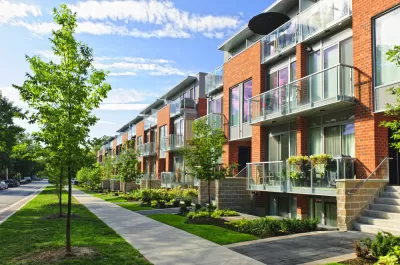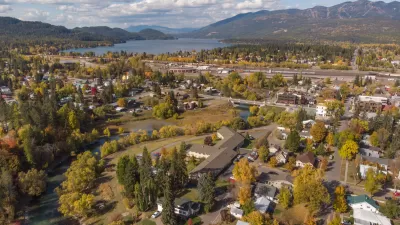Missing middle housing? Ending single-family zoning? How language impacts public opinion in the movement to increase housing density.

As cities and states around the country look to update their zoning codes to allow for more housing density, the language used around zoning reform can make a big difference in how initiatives are received.
As Teo Armus explains in the Washington Post, the framing of proposed zoning changes colors the way people view them, painting upzoning as either a threat to traditional neighborhoods or a boost to housing affordability.
Advocates say expanding housing supply would open expensive enclaves to more people, undoing policies once meant to keep out people of color. Opponents express concerns the changes would overwhelm local infrastructure and spoil what made these areas so attractive in the first place.
The phrase “ending single-family zoning,” which has been frequently used by media including Planetizen, “is an imprecise way of describing the change” because it “doesn’t tell you what it’s going to turn into,” says Jenny Schuetz, urban economist and senior fellow at the Brookings Institution. For people who fear the single-family home next door will be torn down in favor of a high-rise tower, language that more clearly explains the type of new housing that could be built—such as the increasingly popular ‘missing middle housing’—could assuage some of their fears.
According to Jason Jordan, public affairs director at the American Planning Association, “We have to be sensitive and try to find a vocabulary … that avoids the technical jargon debate or this very polarized culture-war debate over whether the suburbs are good or bad.”
FULL STORY: The battle over single-family zoning is also a fight over what to call it

Manufactured Crisis: Losing the Nation’s Largest Source of Unsubsidized Affordable Housing
Manufactured housing communities have long been an affordable housing option for millions of people living in the U.S., but that affordability is disappearing rapidly. How did we get here?

Americans May Be Stuck — But Why?
Americans are moving a lot less than they once did, and that is a problem. While Yoni Applebaum, in his highly-publicized article Stuck, gets the reasons badly wrong, it's still important to ask: why are we moving so much less than before?

Using Old Oil and Gas Wells for Green Energy Storage
Penn State researchers have found that repurposing abandoned oil and gas wells for geothermal-assisted compressed-air energy storage can boost efficiency, reduce environmental risks, and support clean energy and job transitions.

Updating LA’s Tree Rules Could Bring More Shade to Underserved Neighborhoods
A new USC study finds that relaxing Los Angeles’ outdated tree planting guidelines could significantly expand urban tree canopy and reduce shade disparities in lower-income neighborhoods, though infrastructure investments are also needed.

California's Canal Solar Projects Aim to Conserve Resources and Expand Clean Energy
California’s Project Nexus has begun generating electricity from solar panels installed over irrigation canals, with researchers and state agencies exploring statewide expansion to conserve water and boost clean energy production.

HHS Staff Cuts Gut Energy Assistance Program
The full staff of a federal program that distributes heating and cooling assistance for low-income families was laid off, jeopardizing the program’s operations.
Urban Design for Planners 1: Software Tools
This six-course series explores essential urban design concepts using open source software and equips planners with the tools they need to participate fully in the urban design process.
Planning for Universal Design
Learn the tools for implementing Universal Design in planning regulations.
Heyer Gruel & Associates PA
City of Moreno Valley
Institute for Housing and Urban Development Studies (IHS)
City of Grandview
Harvard GSD Executive Education
Salt Lake City
NYU Wagner Graduate School of Public Service
City of Cambridge, Maryland





























